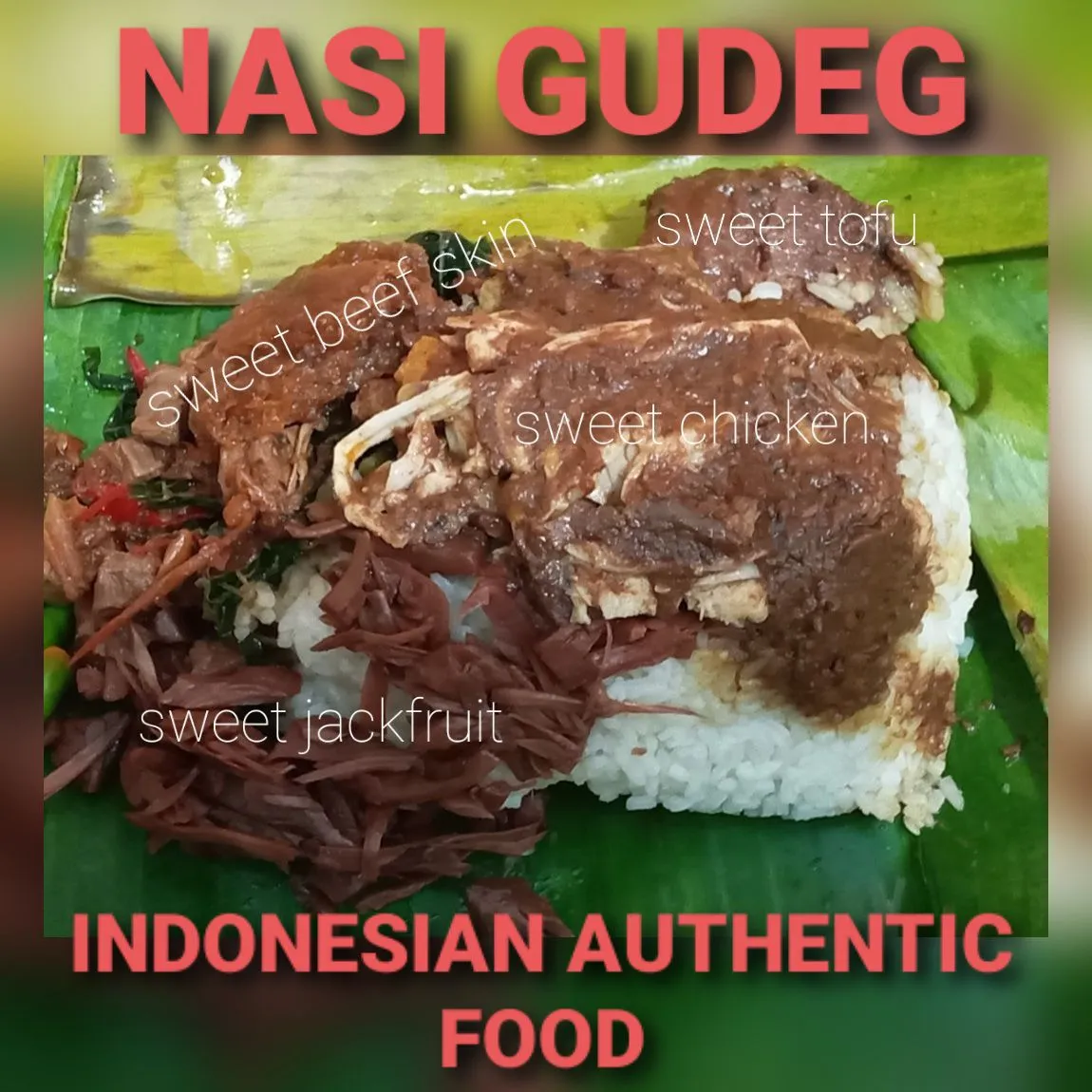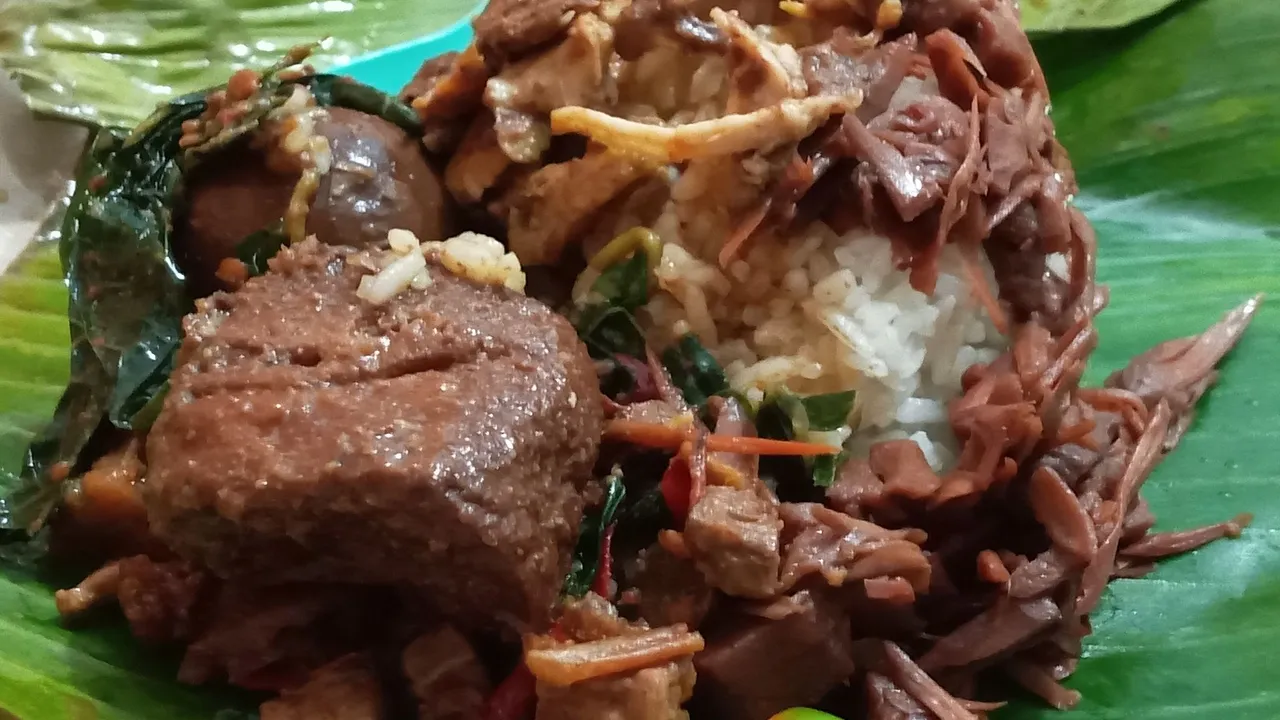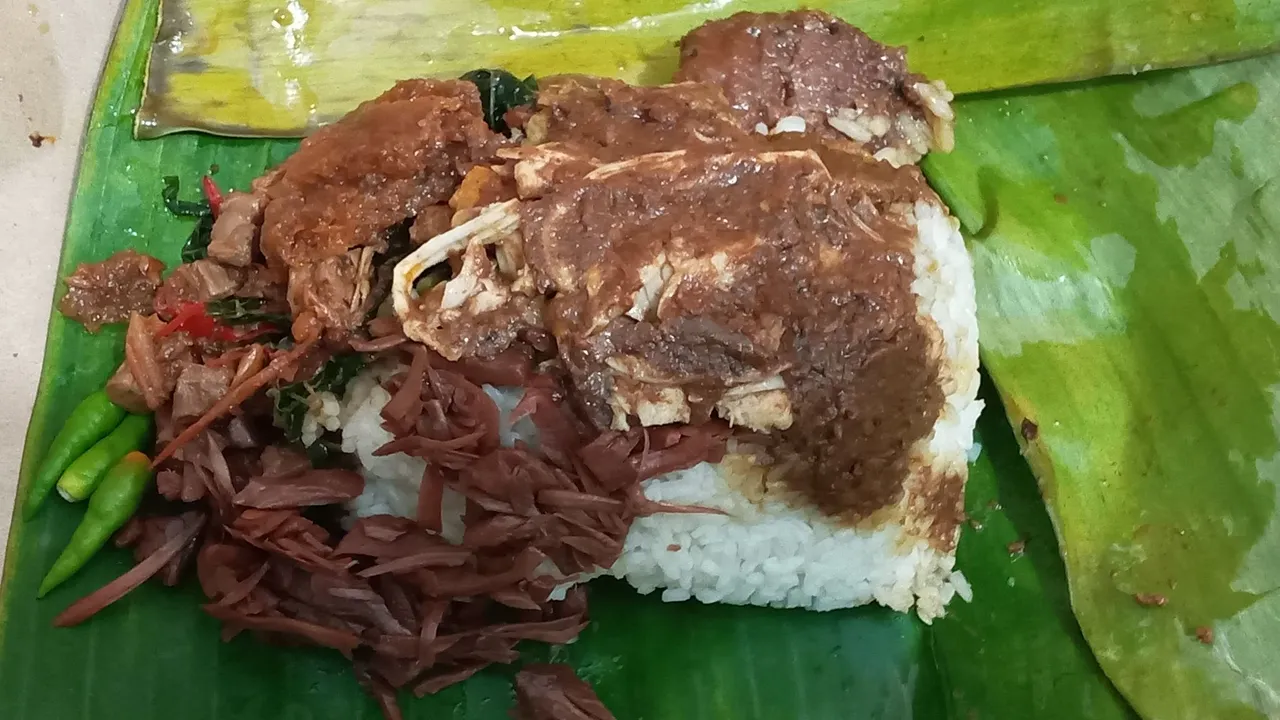I have written about this food quite often but each time I eat it, there's always a different experience. Nasi gudeg is the authentic central java and yogyakarta's cuisine. It is basically a mixed rice with sweet and savory flavor. This meal can be served either vegan, vegetarian and even with meat. So, it's quite a versatile meal.

Gudeg is like the representation of most flavor in central java and Yogyakarta where most meal are sweet. So, if you have sweet tooth, this city is suitable for you. Though in recent years, they have adapted into more spicy taste as the trend of food in Indonesia is meal with spicy flavor. But the authentic gudeg will have the dominant sweetness which I think is the characteristic of meal from this place.This is what distinguish between central and east where in east, spiciness is more dominant.
Where I come from, Gudeg is quite something special and even today, I still treat it as the tourist meal. Though in reality, gudeg is just a regular meal for the natives. They eat it as breakfast, lunch, dinner sometimes even late at night. I know that gudeg are often open until 4 AM. So, this is the meal that never sleeps in this city.

Though I have mentioned in my previous post about it, I will tell you again what's inside gudeg. Gudeg is mixed rice filled with sweet jackfruit, tempe, tofu, and protein. The most common taste of this meal will be sweet. The local gudeg will be served on a banana leaves which makes the rice has nice aromatic.
I also learned that the locals love to eat gudeg with porridge instead of rice. It's something that most tourist don't know about but quite popular among the locals. I have yet to try the porridge one because I simply just couldn't picture eating the porridge with gudeg.
Whenever you're staying in Yogyakarta and crave something to eat at 2 AM, you can always rely on gudeg. It's really filling, satisfying and will send you to a good night sleep.

The Gudeg that I eat in the touristic area versus the local are quite different. The way it is served and the taste are different. I can understand if the gudeg in the tourist area is catered to tourist taste whilst the local one is catered to the locals. For instance, in the touristic area, I never see gudeg served with chilies but in the local area, they also serve it with chili. Not to mention, the option of porridge that doesn't available in the tourist area but available in the local gudeg.

When it comes to the price, it varies but the local ones are generally cheaper than the well-known gudeg place and tourist area. There local gudeg are usually sold in the streets. So, it's like a street meal instead of in restaurant or an established building. The locals generally buy it from the sellers on the side of the road instead the restaurants. While people like me tend to buy it from a restaurant or eating stalls.
What I recommend while trying this food is that try to find the one that sells on the roadside because that's often where the locals go. In modern time, gudeg is also available in canned version. I have yet to try this one because it was quite pricey. If I can buy a fresh one, why would I buy the packaged version? but obviously, I am still curious so, I might get it soon-ish.
That's all for today's look into Authentic Indonesian food. If you want to read my previous series on it, here are the list that will make you crave to taste Indonesian food :
Nasi Kuning, Aromatic Savory Yellow Rice: A Look Into Authentic I ndonesian Food.
Nasi Campur, Experience The Diversity of Indonesia Through Nasi Campur

 | Mac is a content creator that covers literature, books, technology, philosophy, nootropics, productivity, minimalist lifestyle, cybersecurity, and languages. Other than those, she is passionate about cooking and travel. In her free time, she enjoys learning various things. |